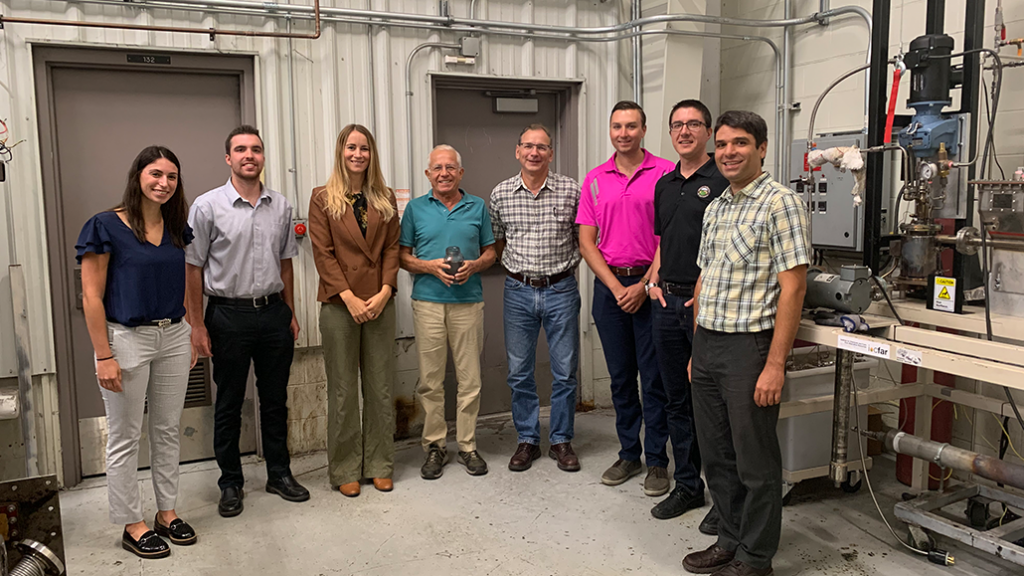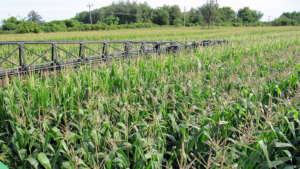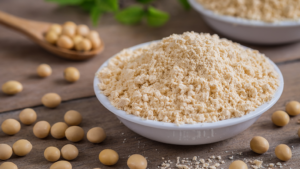New markets for DON-infested corn
INNOVATIVE RESEARCH UNDERWAY

ONTARIO FARMERS PRODUCE over eight million metric tonnes of corn every year, but as growers know, some of it unavoidably becomes infested with vomitoxin, also known as deoxynivalenol or DON. DON is a mycotoxin produced from Fusarium, a fungal pathogen that also attacks barley, oats, wheat, and rye in Ontario and beyond.
Markets for products made from this corn would be welcome, but these products must first be developed.
That’s happening as we speak in the lab of Dr. Franco Berruti at the University of Western Ontario. Berruti is a Chemical & Biochemical Engineering professor and director of the Institute for Chemicals and Fuels from Alternative Resources (ICFAR). Berruti is also the NSERC Industrial Research Chair in Thermochemical Conversion of Biomass and Waste to Bioindustrial Resources. This position was created to develop innovative and practical solutions for transforming biomass and other organic materials using thermochemical technologies into value-added products that can be successfully commercialized.
Grain Farmers of Ontario has supported this Research Chair position since it was created in 2019, along with several other agriculture groups, the city of London, and various technology companies focused on sustainable products and recycling.
“Farm sustainability is a significant priority for Grain Farmers of Ontario and its members,” says Dana Dickerson, Grain Farmers of Ontario’s manager, market development. “We want to be supporting the development of new technologies that can be used to reduce waste and support value-added processing of part of the annual harvest into new end uses. We want to help build the bio-products industry, which has the potential to be an important market for our grains.”
Dickerson notes that in 2018, as this project was being developed, Ontario dealt with a significant DON outbreak which limited the ability of grain farmers to market the corn crop for food and feed. Even ethanol marketing was impacted, as the process of producing ethanol intensifies vomitoxin levels in coproducts like dried distillers grains used for animal feed.
NEW RESEARCH
Berruti and his team have been making good progress. They’ve determined that it’s indeed possible to use pyrolysis to eliminate vomitoxin in corn and produce marketable bioproducts. Pyrolysis involves applying heat without oxygen, breaking organic molecules into a solid carbonized residue (called biochar), bio-oil (condensed from vapours), and gases.
As described in a new paper published by Berruti and ICFAR colleagues Shokooh Karami, Sadegh Papari and Naomi Klinghoffer, they found that pyrolysis at temperatures between 450°C and 650°C destroyed DON from 5-7 parts per million in raw corn grain to nothing in the bio-char.
“This is brand new research and very unique,” says Berruti. “The solid biochar residue can be marketed as an adsorbent for pollutants in water and other materials. It’s equal in performance to commercial activated charcoal, which is expensive and made from fossil fuels. Biochar can also be marketed as a soil amendment and for a broad variety of other applications. When we condensed the vapours into liquid, we get a ‘bio-oil’ as it’s known, containing mostly acetic acids and sugars.”
Acetic acid and sugars such as levoglucosan were the two major valuable components in the bio-oil, but although they could be separated and commercialized, their low concentrations do not justify such post-processing. However, Berruti says the bio-oil could be efficiently used as the carbon source for bacteria-producing biogas in anaerobic digestion processes, thus producing renewable energy. Alternatively, the vapours, consisting of a broad variety of hydrocarbons, could be directly combusted to generate renewable energy.
Similarly, the gases produced from pyrolysis of vomitoxin corn were mainly H2, CO, CO2, CH4, and C2H4. – a mixture with an energy value with potential as a renewable energy source. Berruti adds that there is “an interesting opportunity” to utilize the vapours and the gases to generate sufficient energy to make the entire process fully autothermal, resulting in biochar as the unique value-added product of the conversion process of DON-contaminated corn.
BIOCHAR USE
Waste corn converted to activated bio-char can also be used for the treatment of wastewater, which Berruti, Karami and Papari outlined in another recent paper.
“Increased water pollution due to population and industrial growth is becoming one of the main global issues,” says Berruti. “Water contaminates are generally categorized into organic and inorganic pollutants, and there’s a wide range of them, from dyes, phenolic compounds, surfactants and metals (arsenic, cadmium, mercury) to nitrates, nitrites and pharmaceuticals. Most of these pollutants are persistent in nature and cause both environmental and health problems.”
And while there are many wastewater decontamination techniques such as reverse osmosis, advanced oxidation, membrane filtration, biodegradation, solvent extraction and chlorination, adsorption has been considered as an easy, efficient, and cost-effective method.
Berruti and his colleagues found that the activated bio-char produced from vomitoxin corn significantly improved the adsorption capacity of pollutants compared to unactivated (raw) bio-char. This is because activation increases biochar pore size. In addition, running the activation process for three hours increased the surface area of the biochar by seven times.
Pollutants such as methylene blue, methyl orange, and ibuprofen were completely adsorbed by activated biochar after five, eight, and 12 minutes respectively, which is similar to what occurs with commercial activated charcoal. “We have confirmed that a toxic waste can be converted into a value-added product that, with its adsorption properties, can effectively compete with commercial activated carbon,” says Berruti. “It’s a very exciting result.”
This project was supported by Grain Farmers of Ontario’s sponsorship of the Natural Sciences and Engineering Research Council of Canada (NSERC) Industrial Research Chair Program, of which Dr. Franco Berruti is the principal investigator and chair. l
NEXT STEPS
Continuing research is being performed by a large team of graduate students and postdoctoral fellows to address the conversion of a wide range of agricultural and forestry residual biomasses, organic wastes, and unrecyclable plastic wastes into value-added products.
Berruti points to biochar for soil amendment applications as representing a great opportunity for the valorization of residual biomass sources. “However, the same charcoal-like material, depending on the feedstock used and the physical and chemical characteristics derived from its processing conditions, can be used for advanced applications, such as adsorption, as described earlier,” he says, “as well as food/feed additives, catalysts, cosmetics, filler for composites, material for electronic applications and more.”
An emerging opportunity to further enhance the value of biochar is its ability to permanently sequester carbon and, as such, qualify for carbon offset credits. Berruti notes that every ton of biochar used as soil amendment locks the equivalent of 3 tons of carbon dioxide into the soil. The research team is working on how to assist biochar producers in gaining appropriate carbon credits in addition to marketing the intrinsic value of their products.
Industrial partners supporting the NSERC Research Chair position are already commercializing biochar, and ongoing research aims to identify the appropriate applications for each feedstock and processing conditions.
The NSERC Research Chair team, in partnership with other industrial partners, is also focussing energy on developing a farm-scale fully auto-thermal equipment for converting residual organic matter into biochar that could then be used on-site while gaining both the intrinsic soil amendment value as well as carbon credits.
“This is a very exciting solution that can provide double value,” says Berruti, “while contributing significantly to climate change mitigation.”
This project was supported by Grain Farmers of Ontario’s sponsorship of the Natural Sciences and Engineering Research Council of Canada (NSERC) Industrial Research Chair Program, of which Dr. Franco Berruti is the principal investigator and chair. •

























